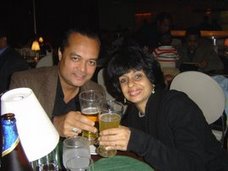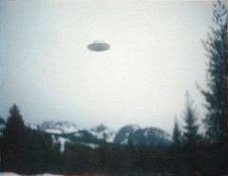The term poltergeist comes from the German words polter, meaning "noisy," and geist, meaning "spirit." Poltergeists cause physical disturbances ranging from rapping on walls to physically abusing people. In addition to their propensity for noisy, physical disturbances, poltergeists have been known to whistle and even whisper on occasion.
A widely held misconception regarding poltergeists is that the terms poltergeist and ghost are synonymous. Although there is some similarity between the two, there are several characteristics that set them apart. For example, poltergeist activity is known as a "disturbance," whereas ghost-like activity (fog, mist, transparent figures, etc.) is known as a "haunting." The reason for this difference in terminology is because poltergeists are heard but not seen, whereas ghosts are seen but seldom heard. Below are the five major differences between poltergeists and ghosts.
Origins:
Ghosts are spirits of deceased beings, usually human, appearing frequently in certain places. They can appear in forms such as transparent entities, complete bodies, foggy mists, and smells (usually associated with the deceased while still living).
Poltergeist theories suggest that poltergeists are mass forms of energy that a living person unknowingly controls, usually through a form of passive psychokinesis resulting from severe physical or psychic trauma. In some extreme cases, poltergeists have been linked to demons.
Association:
Ghosts are usually linked to a specific place or violent death, such as the house the deceased lived in or the place where the deceased died.
Poltergeists are linked to a specific person or object. Some theories suggest that poltergeists can be linked to multiple objects and multiple people, taking a fraction of their energy from each person or object.
Apparitions:
Ghosts appear in areas known to the deceased before death. They are unable leave those areas.
Poltergeists can be triggered by a living person's trauma in any area at any time. They can travel.
Energy:
Ghost energy is continuous over time.
Poltergeist energy is built up over time, then goes dormant and starts over again. The energy climaxes just before dormancy.
Danger:
Ghosts are not violent in a physical sense. Appearances can cause severe mental terror, however.
At level five (climax of energy), poltergeists can become dangerous to the living, inflicting both mental and physical terror.
The poltergeist is a progressive entity in that it passes through five cumulative stages and a period of dormancy before starting over at the first stage. Each stage in this progression invokes a higher level of energy while retaining the energy acquired in previous stages. The duration of each stage can vary from days to years depending on the poltergeist's origin and external influences.
The Five Stages of a Poltergeist
Stage 1: Senses
◦ The activity mainly revolves around the five senses of the human body.
◦ Phenomena: Cold spots, strange noises, hearing footsteps, pets running from rooms, feeling of being watched.
Stage 2: Communication
◦ Strange noises and smells are more easily discernable and direct.
◦ Phenomena: Whispers, moans, animated shadows, breezes in closed areas, marks on floors or walls.
Stage 3: Physical
◦ The poltergeist clearly makes its presence known. What could have been previously dismissed is now a real entity.
◦ Phenomena: Appliances turning on/off, invisible hands touching people, doors opening and closing by themselves, strange knocks at doors and windows.
Stage 4: Trick
◦ It might seem like a harmless and playful entity, but it is really gathering knowledge of what people consider frightening, which it will use to inflict terror in the next stage and derive its energy from the fright.
◦ Phenomena: Flying and moving objects, objects disappearing and reappearing elsewhere, shaking furniture, appearing as frightening entities, creating visions or illusions, speaking in ordering tones; windows, mirrors or other objects breaking for no reason.
Stage 5: Danger
◦ The poltergeist has reached its highest energy point, and should be considered dangerous. Violent and threatening actions begin. After this stage, the poltergeist will go dormant and then begin the cycle again at the first stage.
◦ Phenomena: Biting, slapping or punching people; animating objects; blood on walls, floors and ceilings, attacks by unseen forces, flying knives or sharp objects, heavy objects falling. Threatening writings or visual signs of danger; onset of unknown medical illness.
Fewer than one thousand poltergeist cases have been documented over the years. Of those cases, a surprising number were the result of a prepubescent or teenage person involuntarily and unknowingly evoking (bringing into existence) a poltergeist through psychokinetic energy generated by the brain, usually as a result of severe physical or emotional trauma. This energy process, commonly known as psychokinesis, is the psychic ability to move or change the composition of objects; i.e., mind over matter. Despite psychokinesis playing a major role in many poltergeist cases, it should be noted that poltergeists can evolve as a result of many things, not just psychokinesis.
Thursday, April 3, 2008
Subscribe to:
Comments (Atom)














